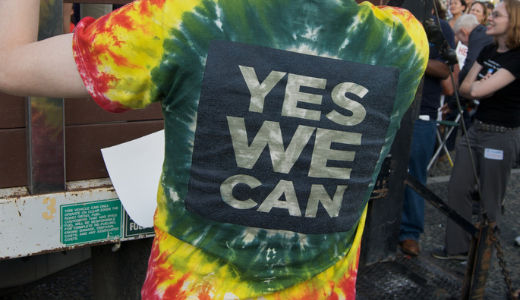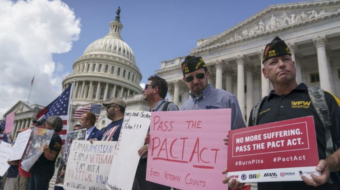
Republicans are showing signs of weakness.
In the last week before the election, when get-out-the vote efforts become job number one for candidates, that party has begun to falter.
Despite the undeniable superiority of the multi-million dollar “air war” waged on their behalf by a combination of the nation’s largest corporations and secret sources, both foreign and domestic, their support may be waning as things come down to the wire.
For starters, there are real questions being raised now about whether the tea party has what it takes to actually get out the vote.
“The push to get the nation’s conservative voters to the polls is fractured and untested, with some ‘tea party’ activists refusing to cooperate with more mainstream Republicans, in contrast with the unified and well-organized parallel effort by unions and Democrats,” read a report in the Los Angeles Times, Oct. 25.
Brendan Steinhauser, director of state and federal campaigns at the right-wing Freedom Works, admitted to splits on the right but said they were an “advantage” in recruiting new activists. “A lot of people don’t want to work with the Republican Party, for the most part,” he said. “They like the candidate, but they don’t want to go to GOP headquarters. They’ll work with us.”
In a Florida Senate campaign debate Oct. 26, none of the candidates seemed to want anything to do with Republicans. The Democrat, Kendrick Meeks, strongly backed a vigorous role for government in job creation and the former GOP governor-turned- independent, Charlie Crist, condemned the “hard right turn the Republican Party has taken.” He defended the president’s stimulus program and backed economic positions taken by Paul Krugman, the liberal economist.
Marco Rubio, the GOP candidate, surprised everyone by distancing himself from both the Republican Party and the tea party. The tea party had backed him in the GOP primaries. He said that, unlike other tea partiers, he was opposed to privatizing Social Security.
“There is a sense now that Republicans may not be able to capitalize on the backlash against President Obama and the Democrats because they lack the well-organized voter ID and get-out-the-vote effort that they had in the past,” said Lawrence Jacobs, a University of Minnesota political scientist.
Supporting that opinion are some obvious shifts by the right during the last week of the campaign to pay more attention to the ground game they have thus far de-emphasized in favor of media blitzes.
Karl Rove’s American Crossroads, on Oct. 25, decided to quickly pump $10 million into what it says will be “get-out-the-vote” efforts while, on the same day, the ultra-right Americans for Prosperity spent $17 million to quickly open “field offices” in 12 states. There are reports that the “field offices” are primarily staffed by people shipped in from outside areas.
As divisions and problems with ground operations surface on the right, labor’s voter turnout efforts appear to be getting stronger by the day.
Unable to afford the expensive TV ad campaigns, labor has devoted its budgets to a less visible but often more effective approach – building a machine that can turn out sympathetic voters. Unions are emphasizing personal voter contact to win the close congressional races happening across the country.
In Pennsylvania last week, as he did at a union phone bank in Illinois three weeks earlier, AFL-CIO President Richard Trumka said his federation was contacting every union member in the state 25 times with mail, phone calls and personal visits.
In perhaps the most sophisticated labor mailing ever, 10 million union members received personalized letters this week warning that if Republicans take over Congress they will privatize Social Security, cut off unemployment benefits extensions and let health insurance companies gut health care.
Indication that all of this may be paying off for Democrats came Oct. 27 with the release of the latest Newsweek generic ballot poll that has Democrats in the lead now, 48 to 42 percent. The same poll showed President Obama’s approval rating jumping to 54 percent. Those disapproving of his performance numbered 40 percent, the lowest since February, 2010.
This is not a national race, however, so Republicans can still hold advantages in individual races. Still, Democrats are gaining traction on the ground as well. In Ohio, for example, the Democratic candidate for governor has caught up to the Republican, erasing a ten-point lead. Also, some other recent polls show the Republicans still in the lead. Nonetheless, the Newsweek poll does represent a change in the Democrats’ favor.
Those results, on top of an AP poll a day earlier showing that one third of all voters still haven’t made up their minds suggest that the progressive base may be firing up big time.
Image: Hopeful signs for progressive Steve Rhodes // CC BY-NC-ND 2.0










